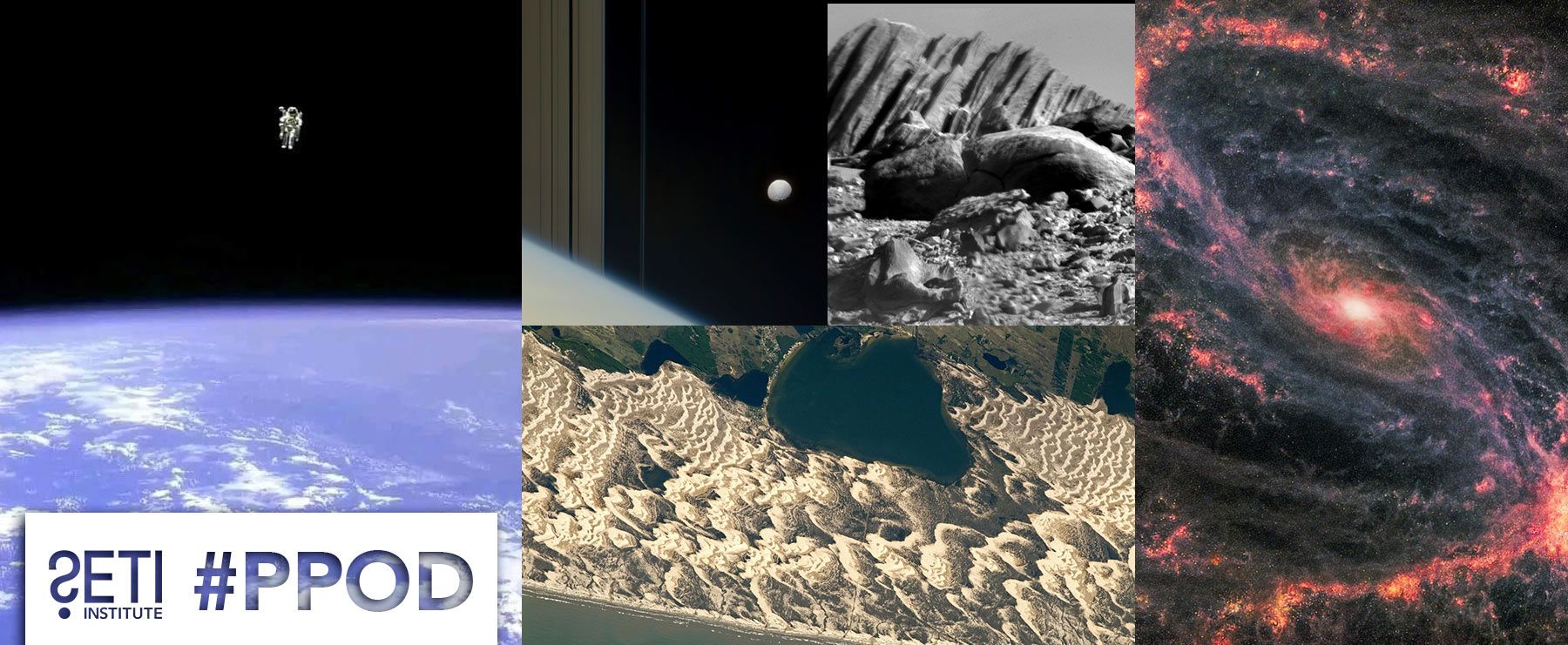
Planetary Picture of the Day
Week of August 7, 2023
A gorgeous spiral galaxy seen with JWST, a scary (but planned) untethered moment in space, and some interesting layered rocks on Mars.
Monday, August 7, 2023

Processing: Robert Eder
M66 by JWST
Spiral galaxy M66, an intermediate spiral galaxy in the southern, equatorial half of Leo, is a member of a small group of galaxies that includes M65 and NGC 3628, known as the Leo Triplet or the M66 Group. It is located 35.88 million light-years away from us.
Tuesday, August 8, 2023

Mimas and Saturn
Mimas emerges from behind hazy Saturn. The rings appear distorted near the planet as their image passes through the upper atmosphere. The images were acquired with the Cassini spacecraft narrow-angle camera on Nov. 30, 2007, at a distance of approximately 1.7 million kilometers from Mimas.
Wednesday, August 9, 2023

Layered Mars Rocks
A very interesting layered rock was seen on the skyline by NASA's Curiosity rover on Mars on the eleventh anniversary of her landing. The rock may look big, but it's not: this is a highly-magnified view taken by the rover's super-zoom Chem-Cam.
Thursday, August 10, 2023

Personal Space?
On Feb. 12, 1984, astronaut Bruce McCandless, ventured further away from the confines and safety of his ship than any previous astronaut had ever been. This space first was made possible by a nitrogen jet-propelled backpack, previously known at NASA as the Manned Maneuvering Unit or MMU.
After a series of test maneuvers inside and above Challenger's payload bay, McCandless went "free-flying" to a distance of 320 feet away from the Orbiter. This stunning orbital panorama view shows McCandless out there amongst the black and blue of Earth and space.
Friday, August 11, 2023

The Barchan Dunes of Brazil
Former NASA astronaut Jack Fischer captured this photograph of Lagoa dos Barros and crescent-shaped barchan dunes on the Atlantic coastline of southern Brazil on July 9, 2017, while aboard the International Space Station.
Barchan dunes are sand dunes that form in areas with one wind direction and little vegetation. In this case, fierce winds from the Western Atlantic sculpt the sand along the coast into distinctive crescent shapes. The tips of barchan dunes point downwind, showing the prevailing wind direction. These fragile formations act as barriers keeping the wind and waves from penetrating inland, blunting the effect of storms and minimizing coastal erosion.





